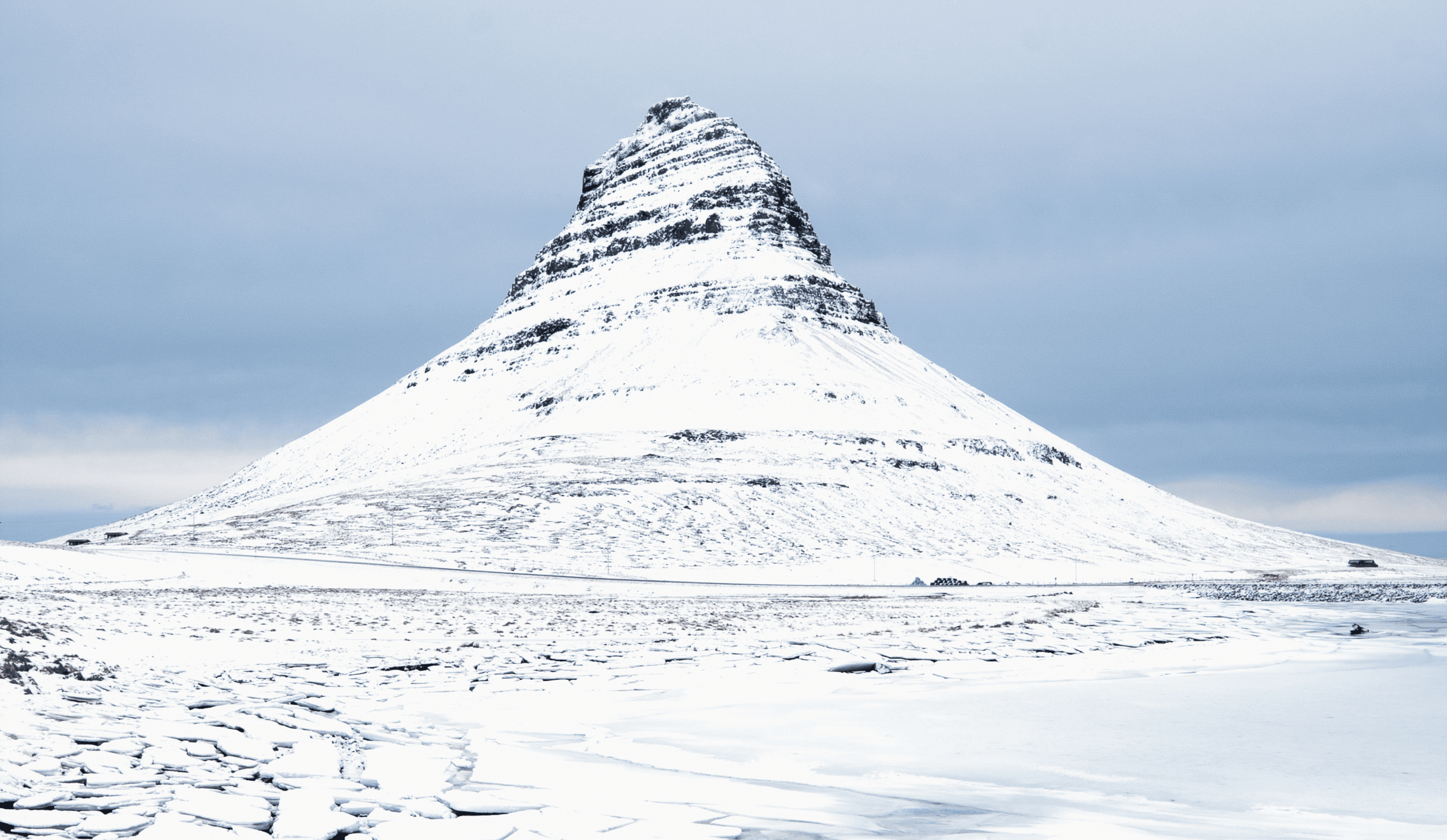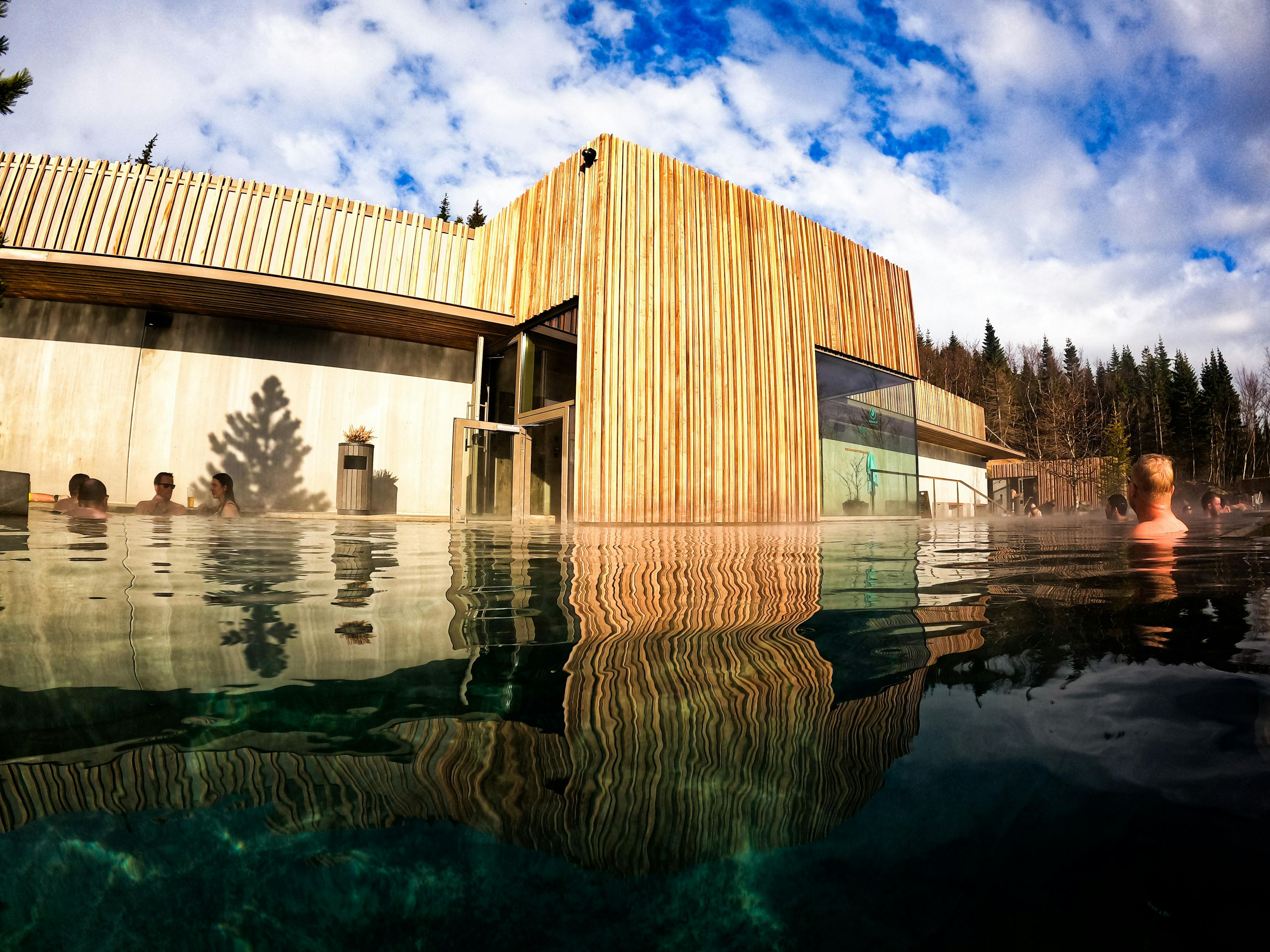
Guides
A Comprehensive Guide to Visiting Iceland in October
Iceland is a land of breathtaking landscapes, magical skies, and unique natural phenomena, making it a top destination for travelers throughout the year. October is a particularly interesting time to visit the country, offering a transition from autumn to winter, where the beauty of the changing seasons can be experienced in full. If you’re planning a trip to Iceland in October, this comprehensive guide will prepare you for what to expect in terms of weather, road conditions, activities, events, and more. Let’s dive into what awaits you in the land of fire and ice during this enchanting month.
Weather Conditions in October: The Transition from Autumn to Winter

October in Iceland is a time of transition, where the crisp autumn air slowly gives way to the chill of winter. The weather can be unpredictable, varying from sunny days to sudden rain showers or even the first snowfalls of the season. Understanding what to expect will help you pack wisely and ensure you’re ready for all the adventures Iceland has to offer.
Average Temperatures:
- Daytime: 3°C to 8°C (37°F to 46°F)
- Nighttime: -2°C to 3°C (28°F to 37°F)
Although October isn't the coldest month, temperatures can fluctuate quickly, especially in the evenings and at higher altitudes. Wind can also make it feel significantly colder, so it’s important to dress in layers.
Daylight Hours:
One of the most notable changes in October is the decreasing daylight. At the beginning of the month, you can expect around 10 hours of daylight, with the sun rising around 8:00 AM and setting by 6:00 PM. By the end of October, daylight shrinks to approximately 8 hours, with sunrise around 9:00 AM and sunset by 5:00 PM. The reduction in daylight is not only important for planning outdoor activities but also sets the perfect stage for viewing the Northern Lights.

Packing for Iceland in October:
The key to packing for Iceland in October is preparing for varied and unpredictable weather. Layering is essential to ensure you stay warm, dry, and comfortable throughout the day, regardless of changing conditions. Here’s a checklist of what to pack:
Clothing:
Base Layers: Opt for moisture-wicking materials like merino wool or synthetic fabrics to keep sweat away from your skin. Avoid cotton, as it retains moisture and can make you feel cold.
Mid-Layers: Fleece or down jackets will provide insulation and keep you warm without adding too much bulk.
Outer Layer: A waterproof and windproof jacket is a must. Iceland's weather can change suddenly, and you'll want to stay dry during rain showers or while exploring waterfalls.
Waterproof Pants: These are great for hiking or walking in wet conditions. Combine them with warm thermal leggings underneath if temperatures drop.
Warm Hat, Gloves, and Scarf: These accessories are essential for keeping warm, especially if the wind picks up.
Waterproof Boots: Invest in sturdy, waterproof hiking boots with good grip. The ground can be wet, muddy, or icy depending on where you go.
Socks: Thick, wool socks will keep your feet warm, especially if you're planning on walking a lot or hiking.
Other Essentials:
Sunglasses: While October is cooler, the sun can still be quite strong, especially with glare from snow or water.
Thermal Flask: Keeping a warm drink handy during hikes or tours can make a world of difference.
Swimsuit: Even in the cooler months, Iceland's geothermal pools and hot springs are inviting, so don’t forget your swimsuit!

Road Conditions & Driving in Iceland in October:
Driving in Iceland in October can be both a thrilling and challenging experience. The country's rugged landscapes are stunning, but they also require careful navigation, especially as winter approaches. Here’s what you need to know about driving conditions during this month:
Changing Road Conditions:
The weather can be unpredictable in October, meaning road conditions can change quickly. The higher elevations, such as mountain passes, may see snow and ice early in the month.
Coastal areas and lower elevations usually remain free of snow, but rain and wind can make roads slick and visibility poor at times.
Icelandic roads are generally well-maintained, but many rural areas, especially in the Highlands, have gravel roads. These can be tricky in wet or icy conditions.

Daylight and Visibility:
With fewer daylight hours, be mindful of when you plan your road trips. Always allow extra time to reach your destination in case the weather or road conditions change unexpectedly.
The roads are less busy in October compared to the peak summer season, which means less traffic but also fewer services along some routes. Plan your stops for fuel and food carefully.
Tips for Driving in October:
Rent a 4x4 Vehicle: A 4x4 is highly recommended if you plan to explore off the beaten path, especially in areas where road conditions can be more challenging.
Check Road Conditions Daily: Use apps or websites like road.is to stay updated on real-time road conditions and closures.
Drive with Caution: Even if the roads appear clear, black ice can form in colder temperatures, especially in the mornings or evenings.
Follow Weather Forecasts: Iceland’s meteorological service, vedur.is, provides accurate weather forecasts. Always check the forecast before setting out.
Why Iceland is Lovely to Visit in October

October is an underrated time to visit Iceland. While summer sees the largest crowds and winter attracts Northern Lights enthusiasts, October provides a perfect blend of benefits from both seasons. Here’s why you’ll love visiting Iceland in October:
Fewer Crowds:
As the high season winds down, October offers more tranquil experiences at Iceland’s most popular attractions. You’ll be able to explore the Golden Circle, Blue Lagoon, and other sites without the overwhelming crowds that summer brings. This makes for a more relaxed and intimate experience with nature.
Lower Prices:
October is part of Iceland's shoulder season, meaning that accommodation and car rental prices tend to be lower compared to the peak summer months. You can enjoy the same experiences at a more budget-friendly rate.
Northern Lights Viewing:

October marks the beginning of prime Northern Lights season. With darker skies and fewer daylight hours, your chances of witnessing this natural phenomenon increase. You can often see the aurora borealis dancing across the sky, especially on clear nights with minimal light pollution. Many tour operators also offer Northern Lights tours starting in October.
Autumn Scenery:
The landscapes in Iceland during October are particularly stunning. Autumn colors begin to blanket the countryside, with hues of orange, red, and gold contrasting against the black volcanic sands and blue glaciers. This creates an extraordinary setting for photography and sightseeing.
Top Activities to Do in Iceland in October
Iceland offers a wide range of activities throughout the year, but October has its own unique offerings that make the experience special. Whether you’re an adventure seeker, nature lover, or history enthusiast, there’s something for everyone.
- Northern Lights Hunting:
October is the start of Northern Lights season, so this is a must-do activity. You can either join a guided tour or head out on your own to remote areas with minimal light pollution. Some of the best places to view the aurora include Thingvellir National Park, the Snaefellsnes Peninsula, and the remote Westfjords.
2. Glacier Hiking & Ice Caving:
Iceland is home to numerous glaciers, and October is a fantastic time to explore them. Guided glacier hikes are available on glaciers like Vatnajökull and Sólheimajökull. October also marks the beginning of ice cave season, with tours available to explore the stunning natural formations inside the glaciers.

3. Hot Springs and Geothermal Pools:
As the weather cools, soaking in one of Iceland’s hot springs becomes even more enjoyable. The Blue Lagoon is a popular choice, but there are many natural hot springs and geothermal pools scattered throughout the country. Secret Lagoon, Reykjadalur, and the Myvatn Nature Baths are other excellent options for a warm, relaxing soak.
4. Whale Watching:
While summer is prime whale watching season, October still offers opportunities to see these magnificent creatures, especially in areas like Eyjafjordur and Reykjavik. In October, you might spot minke whales, humpbacks, and even the occasional orca.
5. Explore the Golden Circle:
The Golden Circle is one of Iceland’s most popular sightseeing routes, featuring the stunning Gullfoss waterfall, the Geysir geothermal area, and Thingvellir National Park. The route is accessible year-round, and in October, you can enjoy these iconic sights without the summer crowds.

6. Hiking:
October is a great time for hiking in Iceland, especially in areas like the Highlands, Snaefellsnes Peninsula, and Landmannalaugar. The weather is cooler, and the autumn colors make the landscapes even more dramatic. Be mindful of the changing weather, and always check trail conditions before heading out.
October Events and Holidays in Iceland
Iceland has a few unique events and holidays in October that you can take part in during your visit:
Reykjavik International Film Festival (RIFF):
Running from late September into early October, RIFF is one of the top cultural events in Iceland. It showcases a wide variety of films from all over the world, including documentaries, feature films, and short films. The festival is held in various venues across Reykjavik, and it's a great opportunity to immerse yourself in Icelandic and international cinema while mingling with filmmakers, actors, and cinephiles.
Halloween:
Though Halloween is not a traditional Icelandic holiday, it has gained popularity in recent years, especially in Reykjavik. Toward the end of October some people in different neighborhoods decorate their houses and Halloween themed candy can be found in stores. Icelanders, particularly younger generations, have embraced this celebration, adding their unique twist to the festivities.
First Day of Winter (Vetrardagurinn Fyrsti):
Celebrated on the Saturday between October 21 and October 27, this traditional Icelandic holiday marks the official start of the winter season, according to the old Icelandic calendar. While not a large, nationwide celebration, it's a significant cultural event, and you might notice locals celebrating with small gatherings or community events. It’s a chance to experience Icelandic traditions and learn about their relationship with the changing seasons.

Why October is the Perfect Time for Photography in Iceland
For photographers, October in Iceland is a dream come true. The unique combination of autumn colors, dramatic weather patterns, and the low angle of the sun creates the perfect lighting for capturing stunning landscapes. Here are a few reasons why October is particularly special for photography:
1. Golden Hour Lasts Longer:
Due to Iceland's northern location and shorter daylight hours, the sun remains low on the horizon for much of the day. This results in extended "golden hours," the period shortly after sunrise and before sunset when the light is soft, warm, and perfect for photography. The long shadows and dramatic lighting create the perfect conditions for landscape photography.
2. Vibrant Autumn Colors:
October is the peak of autumn in Iceland, with the foliage displaying brilliant hues of red, orange, and yellow. These colors create a striking contrast against the black lava fields, glaciers, and waterfalls. Popular spots like Þingvellir National Park and the Snaefellsnes Peninsula are particularly photogenic during this time of year.
3. Unpredictable Weather Creates Unique Shots:
Iceland’s weather in October is ever-changing, which might seem challenging for some, but for photographers, it’s an opportunity to capture dramatic skies, rainbows, and even sudden snowfalls. The contrast between stormy skies and sunlit landscapes can result in breathtaking images. Additionally, the occasional first snow of the season provides a unique opportunity to photograph snowy landscapes alongside autumn colors.
4. Northern Lights:
Of course, one of the main photographic attractions in October is the Northern Lights. With the longer nights and darker skies, October provides some of the first good opportunities of the season to photograph the aurora borealis. If you’re hoping to capture the Northern Lights, make sure you have a tripod and a camera capable of long-exposure shots to truly do justice to this celestial phenomenon.
5. Waterfalls in Full Flow:
Iceland is famous for its waterfalls, and in October, they are typically in full flow thanks to the autumn rains and melting glaciers. Iconic waterfalls like Seljalandsfoss, Skógafoss, and Gullfoss are perfect subjects for long-exposure shots that capture the movement of the water. The mist from the waterfalls, combined with the cool autumn air, can also create beautiful rainbows and dramatic atmospheric effects.

Exploring Reykjavik in October
If you’re planning to spend time in Reykjavik during your trip to Iceland in October, you’ll find that the capital city offers plenty of activities, cultural events, and cozy spots to warm up after a day of exploring. October in Reykjavik has a quieter, more laid-back atmosphere compared to the bustling summer months, making it an ideal time to explore the city.
Cozy Cafes and Restaurants:
As the weather cools, Reykjavik’s numerous cafes and restaurants become even more inviting. Whether you're in the mood for a traditional Icelandic meal or just want to sip on a hot chocolate while gazing out at the autumn scenery, there are plenty of options to choose from. Reykjavik is known for its thriving food scene, with an emphasis on fresh, local ingredients. Try traditional Icelandic dishes like lamb stew, fresh seafood, or the unique delicacy of fermented shark if you're feeling adventurous.
Museums and Galleries:
October is an excellent time to explore Reykjavik’s cultural institutions. The city is home to a variety of museums and galleries that highlight Iceland’s history, art, and culture. Visit the National Museum of Iceland to learn about the country’s Viking heritage, or explore the Reykjavik Art Museum for a glimpse into Iceland’s contemporary art scene. The Saga Museum is another great option for those interested in Icelandic mythology and history.
Shopping:
Reykjavik also offers unique shopping experiences, with boutiques and stores selling Icelandic wool products, local art, and handcrafted goods. The iconic Laugavegur street is the main shopping thoroughfare in the city, where you can find everything from high-end fashion to quirky souvenirs.
Nightlife and Live Music:
Despite its small size, Reykjavik has a vibrant nightlife scene. October is a great time to experience live music in Reykjavik’s bars and clubs, many of which feature local bands and artists. If you’re lucky, you might catch a performance at a small venue or even see one of Iceland’s internationally renowned musicians in an intimate setting.

Practical Tips for Visiting Iceland in October
Currency:
Iceland uses the Icelandic krona (ISK). Most places accept credit cards, so there’s no need to carry large amounts of cash. However, it’s always a good idea to have some local currency on hand for smaller purchases in rural areas.
Language:
Icelandic is the official language, but English is widely spoken, especially in tourist areas. You’ll have no trouble communicating in English during your trip.
Tipping:
Tipping is not a common practice in Iceland, as service charges are typically included in the bill. However, if you receive exceptional service, you can round up the bill or leave a small tip.
Wi-Fi and Connectivity:
Iceland is well-connected, and you’ll find free Wi-Fi in most cafes, restaurants, and hotels. If you’re traveling to more remote areas, consider renting a portable Wi-Fi device or purchasing a local SIM card for data access.
Health and Safety:
Iceland is one of the safest countries in the world. Crime rates are extremely low, and the healthcare system is excellent. However, it’s always a good idea to have travel insurance in case of any unforeseen events.
October – A Magical Time to Visit Iceland
October in Iceland is a time of change, beauty, and tranquility. With fewer crowds, lower prices, and a wide range of activities, it’s an ideal time to explore the country’s natural wonders. From witnessing the Northern Lights to soaking in geothermal pools, hiking across stunning landscapes, or enjoying Reykjavik’s cultural offerings, Iceland in October has something for every traveler. Embrace the unpredictable weather, pack your warm layers, and get ready to experience the magic of Iceland during this unique and beautiful month
POPULAR ACTIVITIESPowered by:

We recommend booking tours and activities with our friends at Reykjavík Tourist Info. They offer all the most popular things to do, and their prices are always great. Here are a few of our favorite tours.
On their site you can see everything they have to offer: www.RTI.is
EXPLORE FURTHER

The Luxurious Geothermal Baths of Iceland: A Gateway to Bliss

Explorig Iceland in January: Weather, Activities & The Northern Lights

The Skrimslis "Create Your Own Monster" Experience

Unveiling the Beauty of Forest Lagoon


Top 11 Must-See Attractions in the Snæfellsnes Peninsula

Exploring Iceland in April: A Comprehensive Guide for the Start of Spring in the Country

Hallgrímskirkja Church

Exploring Iceland's Wildlife

Hear from Our Customers
Welcome to Our Community - your hub for insightful reviews and authentic opinions. Join us in shaping the conversation where your voice matters!



